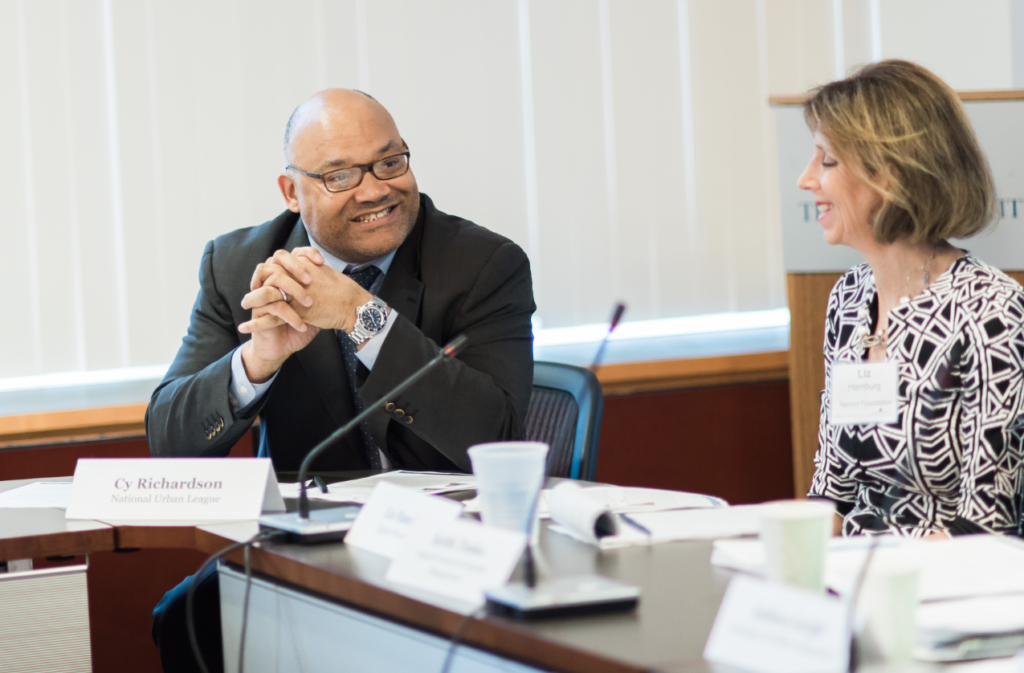 Nonprofit organizations play a vital role in building healthy communities by providing critical services that contribute to economic stability and mobility. They also strengthen communities in other important ways. Frequently, nonprofit leaders are the voice of the people they serve. Thanks to the combination of strong community relationships and intimate local knowledge, these organizations often understand better than anyone else their communities’ needs and the best ways to meet them. Strong, well-resourced nonprofits that are connected to the decision-making infrastructure in their communities can catalyze growth and opportunity.
Nonprofit organizations play a vital role in building healthy communities by providing critical services that contribute to economic stability and mobility. They also strengthen communities in other important ways. Frequently, nonprofit leaders are the voice of the people they serve. Thanks to the combination of strong community relationships and intimate local knowledge, these organizations often understand better than anyone else their communities’ needs and the best ways to meet them. Strong, well-resourced nonprofits that are connected to the decision-making infrastructure in their communities can catalyze growth and opportunity.
But, in an era of growing needs and shrinking government resources, nonprofits are being asked to do even more with less, placing additional strain on their already limited resources. Public and private funding for nonprofits tends to focus on building and expanding programs, as opposed to investing in organizations’ core infrastructure, organizational growth and leadership development. As a result, many nonprofits are starved for the kind of support that can strengthen their operations, enable them to deliver their services more effectively and ultimately help create a strong economy that is good for all sectors.
How can the business community help? We need to expand our notion of support to include capacity-building investments, skills-based volunteerism, and network creation. As we think about our responsibility to the communities we do business in, we need to be creative and resourceful. We need to engage with these organizations and make the connections they often need to support their mission.
According to a survey conducted by The Bridgespan Group for the JPMorgan Chase, more than 200 nonprofits serving low and middle income communities identified the top four areas where they needed the most help. In addition to fundraising (61%) they listed communications and marketing (51%), program evaluation (38%), performance management (33%), technology (31%) and strategic planning (29%). Other areas for strengthening included board governance, human resource management and financial planning.
In addition, it is critical that nonprofits be included in policy-making discussions so economic growth is inclusive of all communities. The business sector can use its convening power and networks to facilitate introductions and opportunities to ensure nonprofits have the opportunity to participate in conversations about addressing community challenges. In doing so, we help to make sure that we all benefit from the expertise and understanding strong nonprofit leaders can bring to the table.
To that end, and in an effort to think “beyond the check,” JPMorgan Chase & Co. is increasing our commitment to building the capacity of community-based nonprofits and strengthening networks with peer institutions, civic leaders, elected officials and other stakeholders who help shape the policies that directly impact the communities they serve. We believe that a robust nonprofit sector is essential for strong communities and are committed to using our intellectual and human capital, as well as dollars, to help strengthen the sector.
We are using the findings from the Bridgespan survey to structure a tailored program for community nonprofits, including online trainings, workshops that facilitate peer learning among allied organizations, and individual coaching and technical assistance, as requested by the survey respondents.
On March 8th, we are partnering with the Aspen Institute to convene thought leaders from the nonprofit, philanthropic and civic communities to identify opportunities, and begin to resolve obstacles, to increasing access to capacity building services for more nonprofit organizations.
This effort brings together a wide range of people and resources at our firm. We know this is important work and look forward to others in the business and philanthropic communities joining us to support a strong nonprofit sector. Together, with a dynamic nonprofit sector and strong civic leadership, we hope to create vital communities throughout America.

